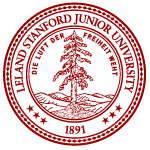 |
|
|
Mark Henderson, The Times, Friday, December 20, 2002
Scientists have proved that it is possible to tell where in the
world a person comes from by studying their genes.
Tiny variations in a person's DNA can usually yield enough information to trace his or her geographic ancestry to a specific continent, research in the United States has shown.
A study, led by Noah Rosenberg, of the University of Southern California in Los Angeles, found that most people have genetic idiosyncrasies that can mark out the geographical origins of their families.
Dr. Rosenberg's team took DNA samples from 1,056 people from 52 populations around the world. All the subjects could trace their families to the same region for several generations. They then removed the labels from the samples, and tried to predict whether each person originated from Africa, Eurasia, East Asia, Oceania, or the Americas.
Marcus Feldman, of Stanford University in California, said: "We asked the question, 'Can we look at the DNA and detect where groups of individuals form clusters that are genetically related to one another?'"
Using a statistical technique to analyse small variations in DNA known as microsatellites, the researchers successfully predicted the geographic origins of virtually every individual from Africa, East Asia, Oceania and the Americas.
Only with Eurasia, which includes Europe, the Middle East and Central and South Asia, was the process more difficult, according to the study, details of which are published today in Science.
"A complex history of migration, conquests and trade over the past few thousand years is likely to be the cause for this difficulty," Professor Feldman said.
The technique is expected to help scientists to trace patterns of migration.
